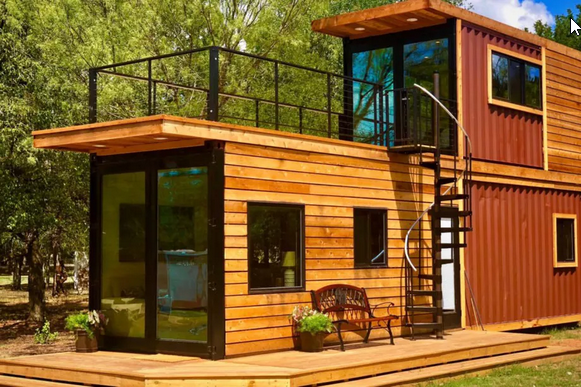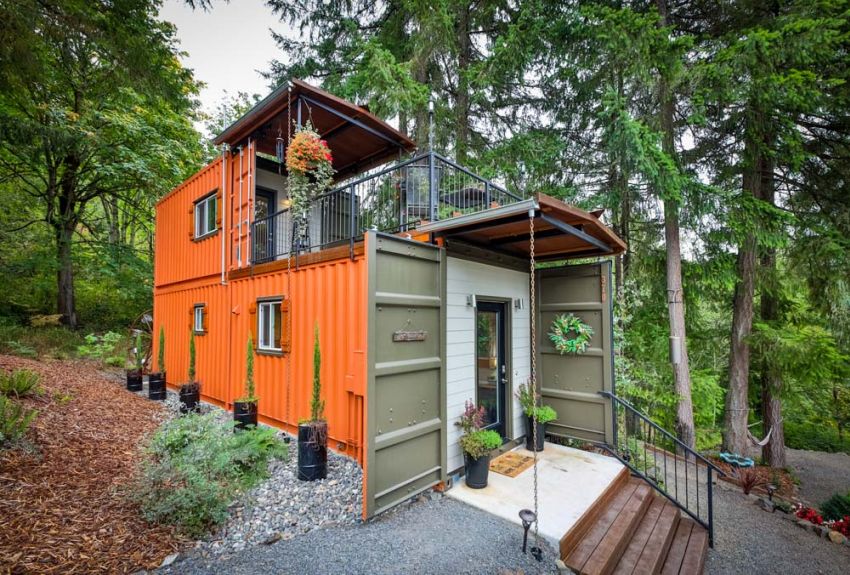14 May DIY Container Homes: The New Frontier of Tiny Living
Over the last decade or more of growth in the tiny house market, industry leaders and innovators are continually improving upon and perfecting the art of tiny house manufacturing. From custom homes to tiny utopian villages, these homebuilders don’t shy away from a challenge. They’ve created houses from school buses, vans, converted trailers, RVs, gypsy wagons, and everything in between.
Now, the market is being overrun with container homes as they create a virtual lincoln log of building materials that can be pieced together into whatever sized home is desired in patterns that are virtually indestructible by hurricanes, tornadoes, and more.

Price Breakdown
A large shipping container home can cost upwards of $150,000, however most tiny houses created from containers are closer to the $60,000 price range. Someone who is skilled in carpentry and is building a basic container tiny house without any extras can look to complete their container for around $10,000.
Items that aren’t typically considered that can be costly:
- Permits – Cost will vary based on your area and types of permits required
- Site prep – Foundation that is rocky, uneven or prone to flooding will increase cost
- Delivery – Price varies by number of units to be delivered and distance traveled
- Availability – Most containers ship directly from China (known as one-trippers); so available stock will affect price
Places to Pay
- Container:
A typical 20’ container, purchased new costs around $7000, while you can get one considered “Sea Worthy” for around $5000, or one that is used for $3,000-$5,000. Be cautious of buying these used. For the price difference, this could end up costing you in the structural integrity of your home.
- Certification:
Like any home and most tiny houses, you want to ensure you hire the right certification company for your home. This will be the organization whose seal of approval is needed for you to legally park your tiny house around the globe.
- Chemical Concerns:
Containers were created for a lifetime at sea. To avoid harmful chemicals in your shipping container home–like pesticide in the wood floors or lead-based paint–you can buy a new chemical-free shipping container or make some adjustments. Consider ripping up the pesticide-infested wood flooring and installing your own. Foam insulation on the interior of the shipping container will protect from any off-gassing from harmful chemical paints.

Concerns to Consider
- Length:
Side-load containers come in 20′ and 40′ lengths. A 40’ box is bigger, heavier, and cost more to have moved. A 20′ container can be relocated with a roll-back tow-truck or a pickup and roll-back goose-neck trailer, but a 40’ will require a semi and a crane to hoist it. If size is the problem, consider buying two 20’ boxes and piecing them together on-site.
- Location:
Does your tiny need to be hurricane proof? Tornado? Have a reduced fire spread rating? All of these ideas must be considered during the purchase of your type and length of container, the decision of how many windows and doors to add, as well as how you tie your structure to the ground where you are parked.
- Legalities:
Most tiny structure dwellers have had their share of legal battles for where they can park their tiny without complaint. Currently, Texas, California, Tennessee, Louisiana, Missouri, Oregon, and Alaska are known to be relatively welcoming and easy to deal with when it comes to shipping container homes, but ask before you build. Check both at the state and local government levels where you live to ensure smooth sailing.

Sorry, the comment form is closed at this time.